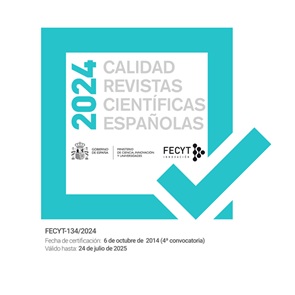THE STRUCTURE OF HUMAN ACTION. REFLECTIONS ON SUMMA THEOLOGIAE, IaIIae, qq. 8-17
Resumen
Using the example of buying a plane ticket with a credit card, it is emphasized that there is a plurality of will acts. The constituents of voluntary acts depend on will as rational appetite, a desire consequent on a knowledge: the human act is a knowing wanting. The constituent will acts bears an end or aim and the means of achieving that end. Free willing requires a capacity which is in potency in two ways: to act or not to act; to do this as opposed to that. When it intends the end, there is an object before the mind and will, then enjoyment appears, as an anticipation of the delight of having it in reality. Among the means to the end, three acts of will bearing on means can be distinguished: choice, consent and use, with the company of counsel, intelectual activity which presides over willing the means to the end. The will acts bearing on the end presuppose the presentation of the object by mind; the inquiry into ways and means by mind presupposses the intention of the end by will. The acts of will bearing on end and means are elicited voluntary acts, acts of the will itself; other acts are voluntary insofar as they are commanded by will. Bodily organs are instruments of the powers of the soul, and the organs come under the sway of reason to the degree the powers do. And there is a moral moment: in virtue of what are human acts good or bad?Descargas
-
Resumen245
-
PDF195
Las obras que se publican en esta revista están sujetas a los siguientes términos:
1. El Servicio de Publicaciones de la Universidad de Murcia (la editorial) conserva los derechos patrimoniales (copyright) de las obras publicadas, y favorece y permite la reutilización de las mismas bajo la licencia de uso indicada en el punto 2.
2. Las obras se publican en la edición electrónica de la revista bajo una licencia Creative Commons Reconocimiento-NoComercial-SinObraDerivada 3.0 España (texto legal). Se pueden copiar, usar, difundir, transmitir y exponer públicamente, siempre que: i) se cite la autoría y la fuente original de su publicación (revista, editorial y URL de la obra); ii) no se usen para fines comerciales; iii) si remezcla, transforma o crea a partir del material, no podrá distribuir el material modificado.
3. Condiciones de auto-archivo. Se permite y se anima a los autores a difundir electrónicamente las versiones pre-print (versión antes de ser evaluada) y/o post-print (versión evaluada y aceptada para su publicación) de sus obras antes de su publicación, ya que favorece su circulación y difusión más temprana y con ello un posible aumento en su citación y alcance entre la comunidad académica. Color RoMEO: verde.










